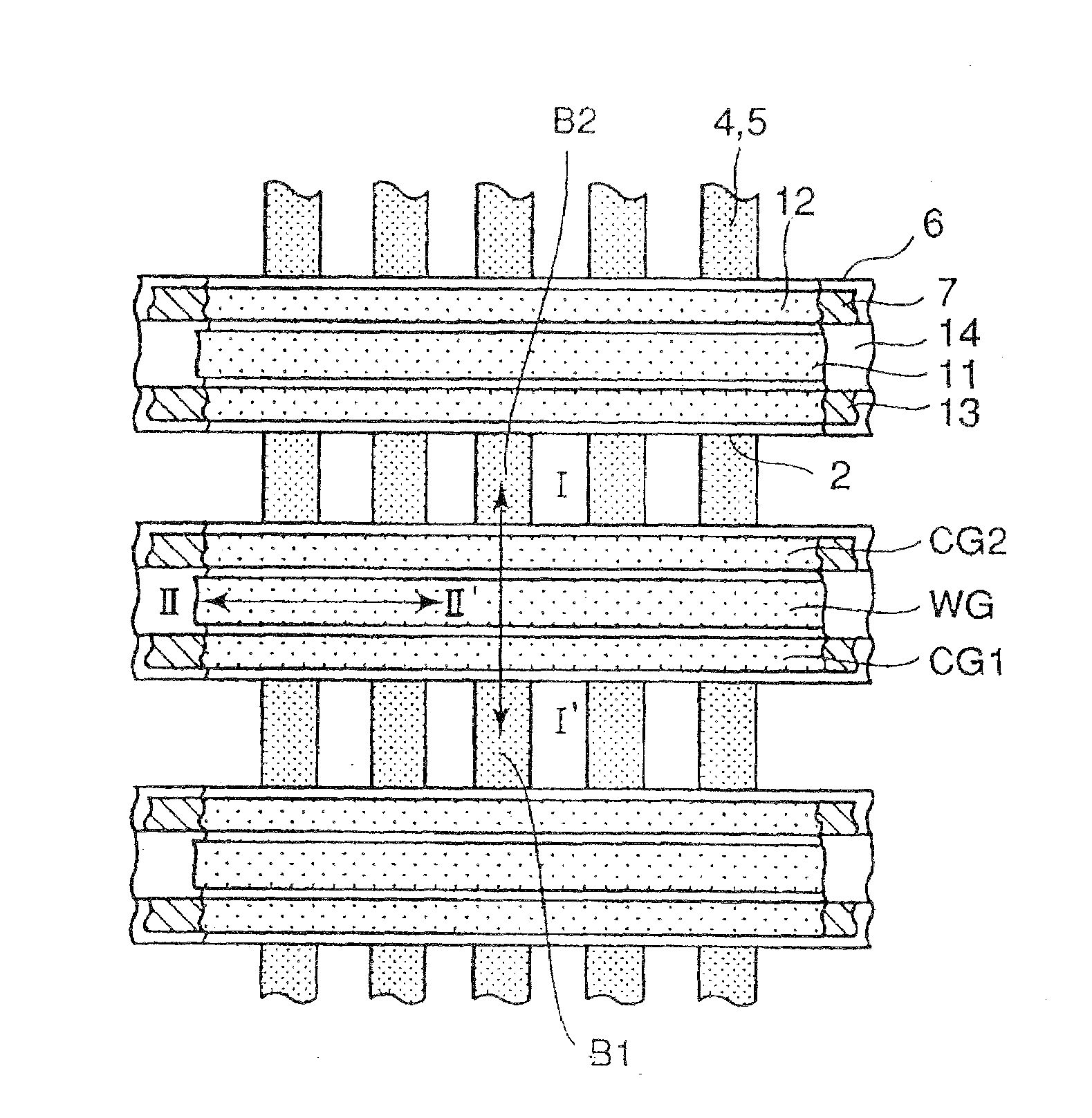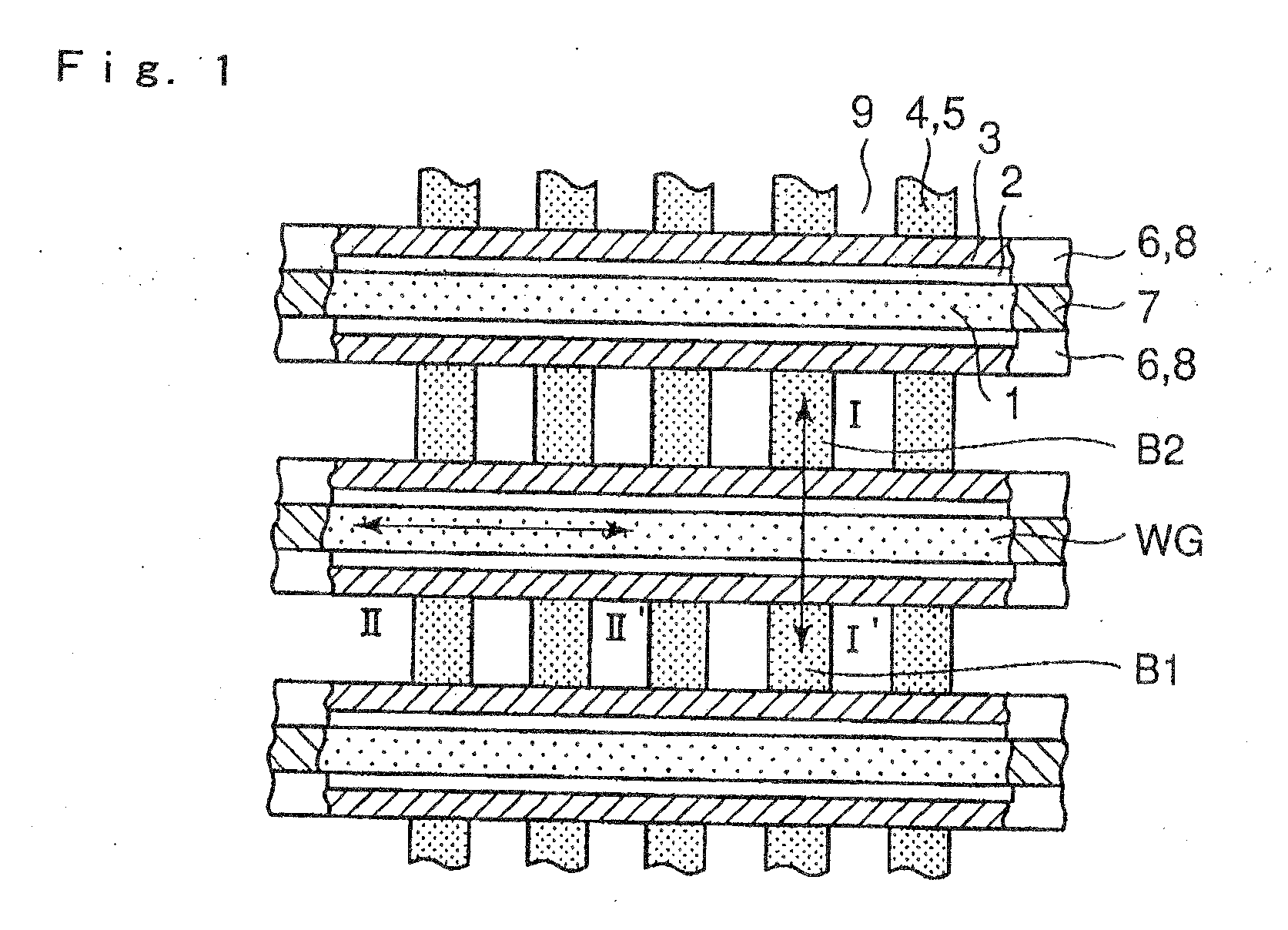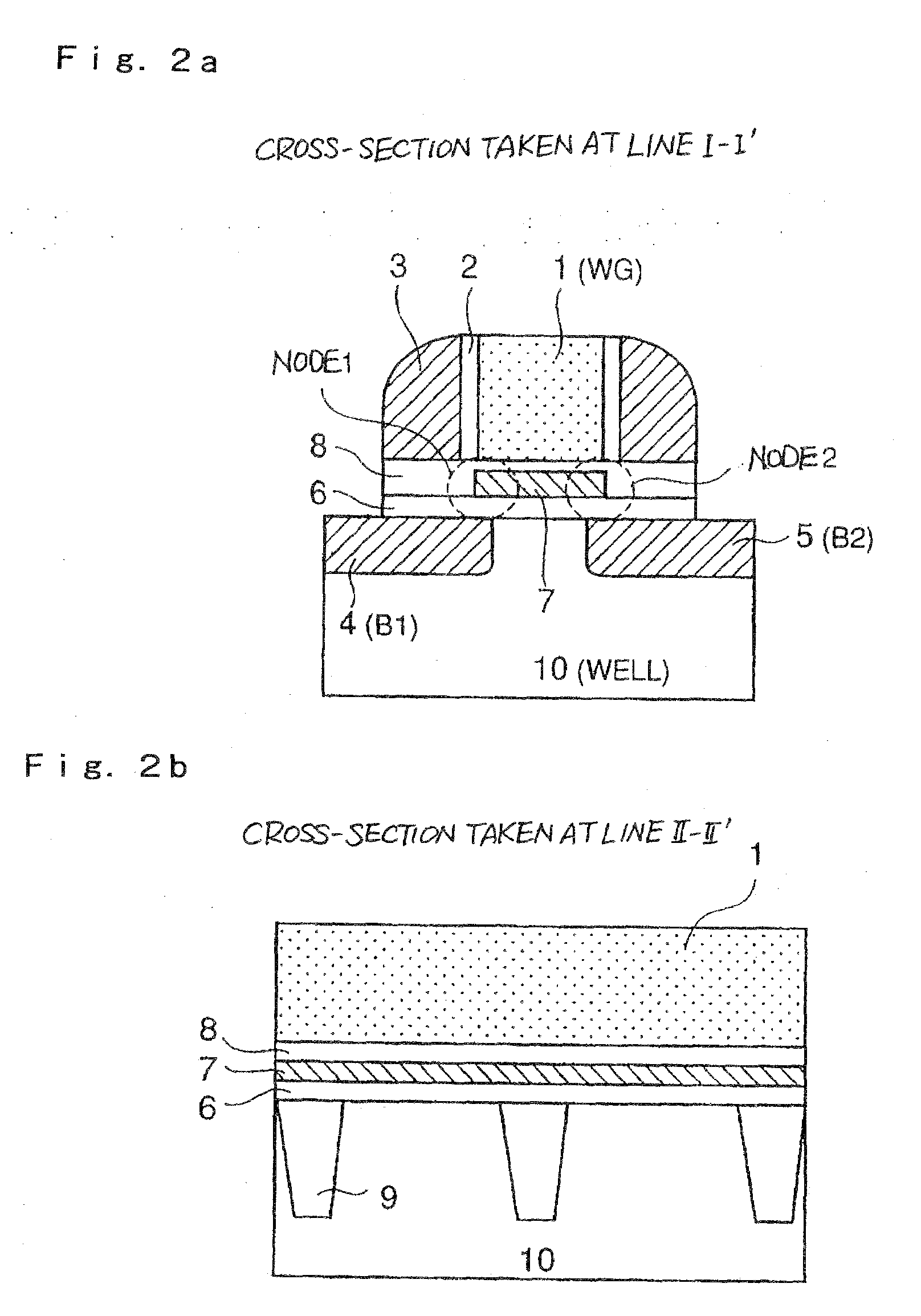Method for driving semiconductor device, and semiconductor device
a semiconductor device and semiconductor technology, applied in semiconductor devices, digital storage, instruments, etc., can solve the problems of data easily losing, difficult to form an inversion layer, and a large decrease in the speed of the latter charge injection, so as to accurately monitor the amount of written charges, uniform shape of the accumulated charge distribution, and variability in electrical characteristics
- Summary
- Abstract
- Description
- Claims
- Application Information
AI Technical Summary
Benefits of technology
Problems solved by technology
Method used
Image
Examples
first example
[0068]Next, a specific example of a case in which the method of driving a semiconductor device, according to the present invention, is applied to a SONOS type non-volatile memory, will be described in detail. A device structure used for the evaluation is the same as the one shown in FIG. 1 and FIG. 2. In this case, an oxide film formed by ISSG (in situ steam generation) is used as first gate insulating film 6, a CVD-Si3N4 film is used as charge accumulation film 7, and an oxide film formed by oxidizing an upper part of the CVD nitride film is used as second gate oxide film 8. Film thicknesses of the upper oxide film, the nitride film and the lower oxide film directly underneath gate electrode 1 are 4 nm, 4 nm and 5 nm, respectively.
[0069]FIG. 14 shows a writing characteristic when writing (charge injection) to node 2 is carried out, while bit line B1 is taken as a source and bit line B2 is taken as a drain, and under a writing condition (writing condition in the related art) where; ...
second example
[0077]Now, a case in which the method of driving a semiconductor device, according to the present invention, is applied to a TWINMONOS type trap memory will be described in detail.
[0078]FIG. 17 is a plane view showing the TWINMONOS type trap memory. FIG. 18a is a sectional view taken at line I-I′ in FIG. 17 and FIG. 18b is a sectional view taken at line II-II′ in FIG. 17.
[0079]In the case of the TWINMONOS type trap memory, control gates 12 (CG1 and CG2) are arranged on both sides of word gate (WG) through inter-gate insulating films 13, respectively. Control gates 12 configure a pair of first gate electrodes while word gate 11 sandwiched in between control gates 12 is configures a second electrode.
[0080]Underneath each control gate 12, first gate insulating film 6, charge accumulation film 7 and second gate insulating film 8 are being formed. A charge accumulation region positioned underneath control gate CG1 will be node 1, and a charge accumulation region positioned underneath con...
PUM
 Login to View More
Login to View More Abstract
Description
Claims
Application Information
 Login to View More
Login to View More - R&D
- Intellectual Property
- Life Sciences
- Materials
- Tech Scout
- Unparalleled Data Quality
- Higher Quality Content
- 60% Fewer Hallucinations
Browse by: Latest US Patents, China's latest patents, Technical Efficacy Thesaurus, Application Domain, Technology Topic, Popular Technical Reports.
© 2025 PatSnap. All rights reserved.Legal|Privacy policy|Modern Slavery Act Transparency Statement|Sitemap|About US| Contact US: help@patsnap.com



